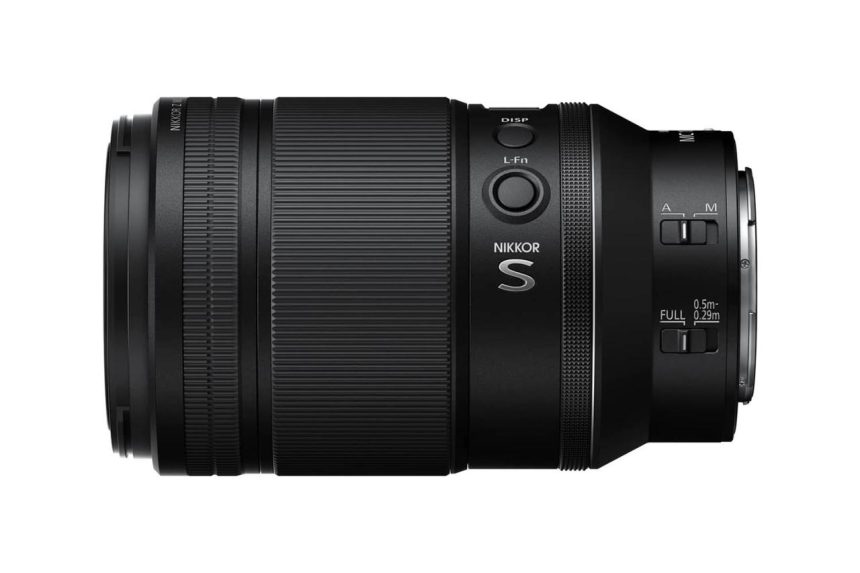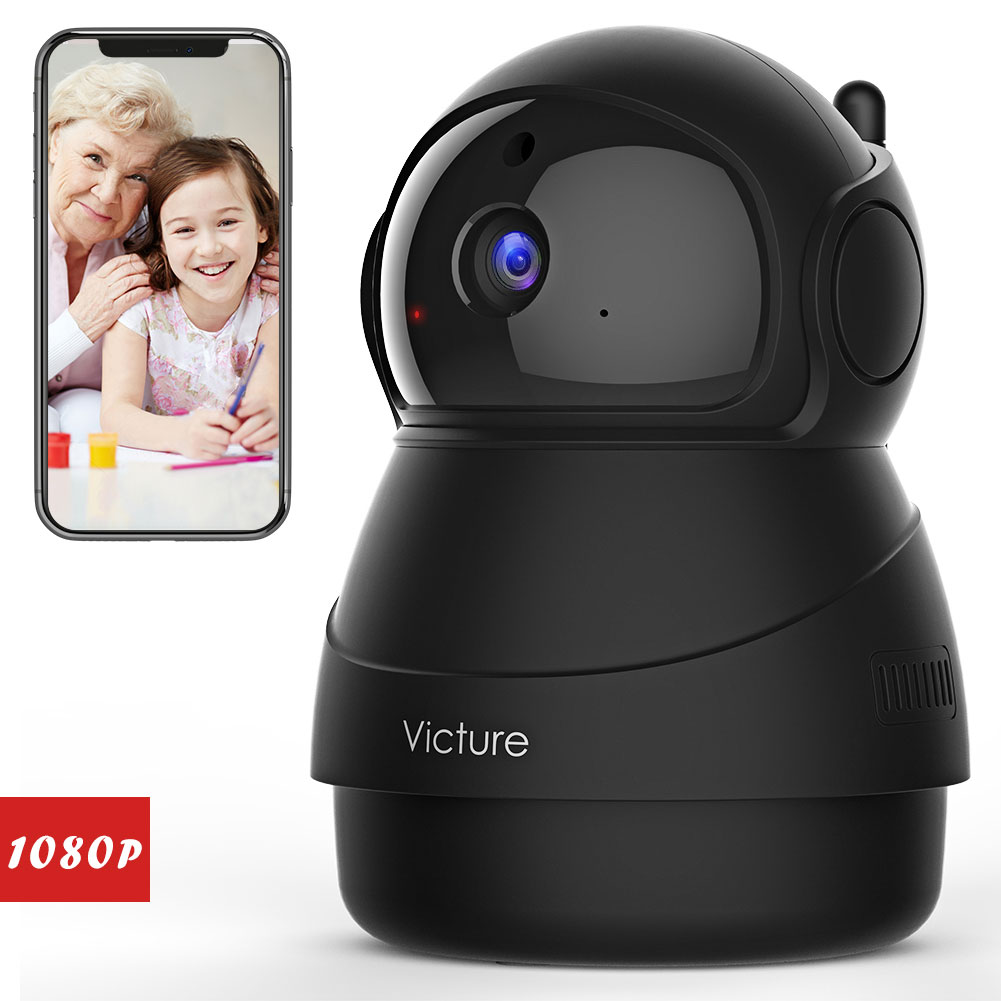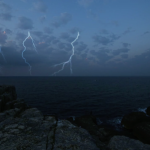Searching for the ideal lens to elevate your food photography can be a daunting task. With the vast array of options available, it’s no wonder many photographers find themselves overwhelmed. Fear not, for we’re here to guide you through the intricate world of food photography lenses and help you discover your culinary soulmate.
In this article, we delve deep into the nuances of food photography lenses, providing expert insights to ensure you capture tantalizing shots that leave your audience craving more. Whether you’re shooting in a bustling kitchen or a controlled studio environment, whether you prefer wide-angle wonders or captivating extreme close-ups, we have curated a selection of our top 12 lens picks to cater to your unique needs.
Our carefully chosen lens recommendations cover all major camera brands, offering a diverse range of price points to accommodate photographers at any level. From affordable gems to high-end precision instruments, we’ve got you covered. By the time you finish reading, you’ll have the perfect lens on your plate, ready to capture every mouthwatering detail and make your food photos truly shine.
So, let’s embark on this delectable journey and unveil our number one pick that will take your food photography to the next level. Get ready to capture culinary perfection like never before!
1. Nikon Z MC 105mm f/2.8 VR S
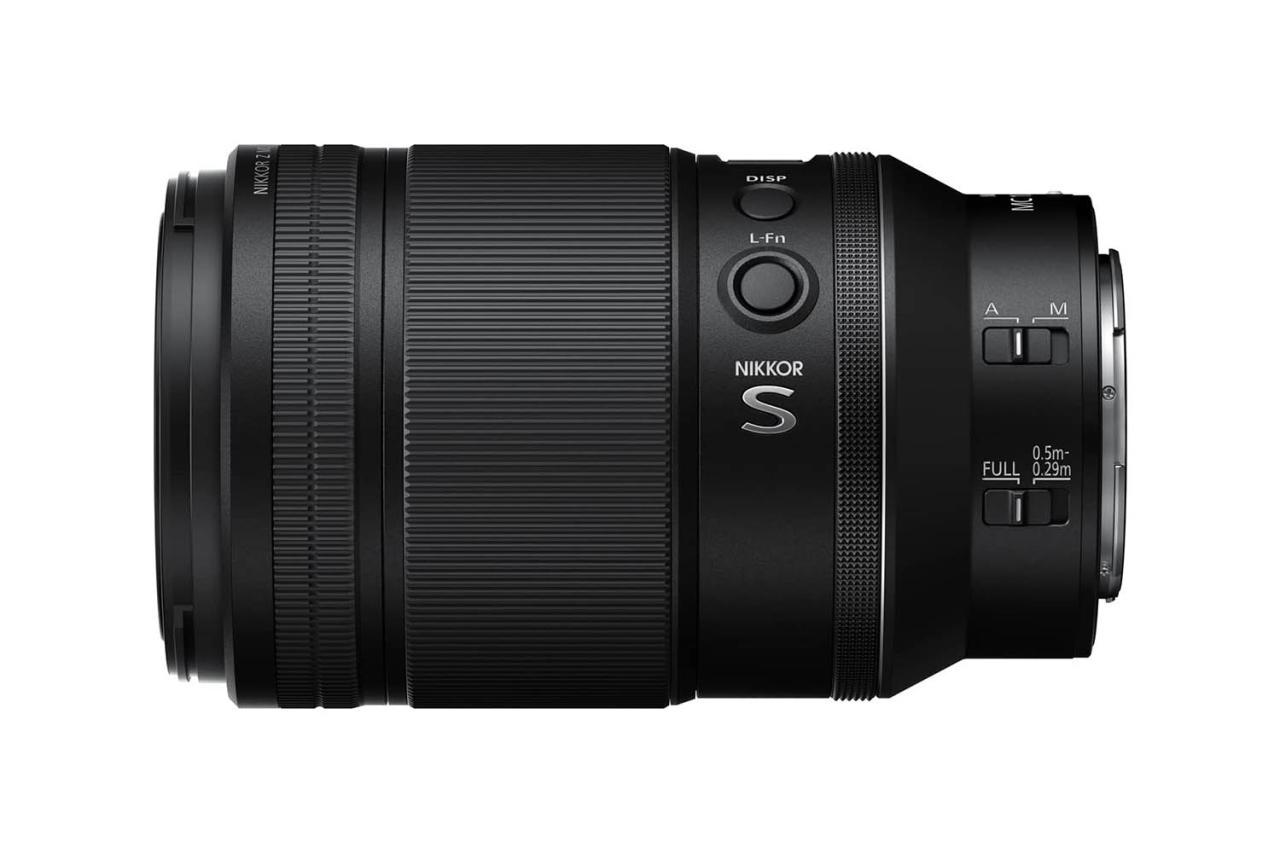
If you’re a Nikon Z-series user with a passion for macro photography, the Nikon Z MC 105mm f/2.8 VR S lens is a game-changer you won’t want to miss. Designed specifically for the Z-mount system, this lens offers exceptional performance, precision, and versatility, making it the ideal companion for capturing stunning close-up shots.
In this comprehensive review, we delve into the remarkable features and capabilities of the Nikon Z MC 105mm f/2.8 VR S lens. With its impressive focal length and fast maximum aperture, you can achieve incredible magnification and breathtaking detail in your macro images. The lens is equipped with Nikon’s Vibration Reduction (VR) technology, ensuring sharp, blur-free shots even in challenging lighting conditions.
We explore the lens’s optical construction, highlighting its exceptional image quality, sharpness, and color rendition. Its advanced autofocus system guarantees fast and accurate focusing, allowing you to capture elusive subjects with ease. Additionally, the lens boasts a robust build, weather sealing, and a customizable control ring, providing a seamless shooting experience.
Whether you’re capturing intricate details of food, flowers, or small subjects in nature, the Nikon Z MC 105mm f/2.8 VR S lens excels in delivering extraordinary results. Unleash your creativity and take your macro photography to new heights with this exceptional lens that perfectly complements your Nikon Z-series camera.
2. Canon EF 100mm f/2.8L Macro IS USM
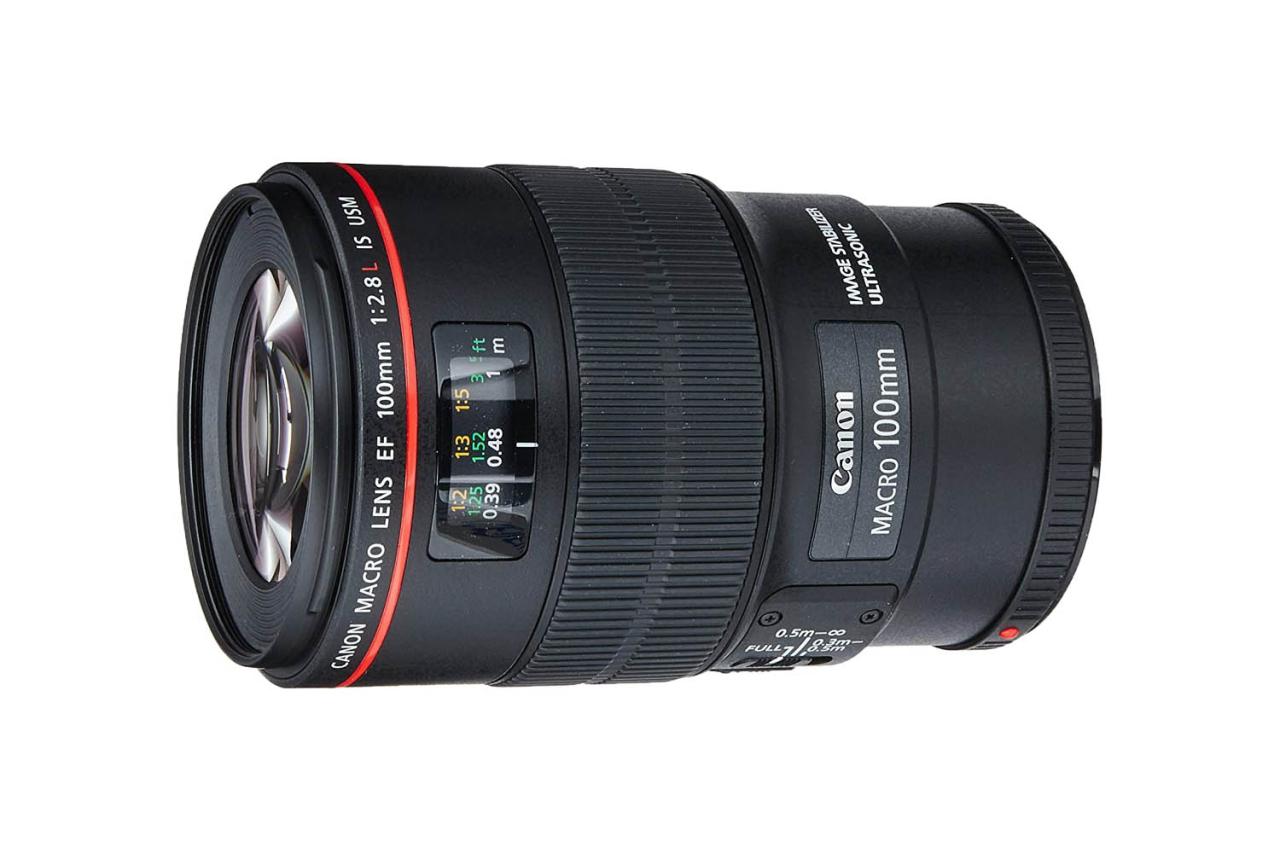
For Canon users seeking an exceptional macro lens, the Canon EF 100mm f/2.8L Macro IS USM lens is a top choice that will revolutionize your close-up photography. Built with precision and innovation, this lens combines advanced features and superior image quality to capture stunning details and bring your subjects to life.
In this in-depth review, we explore the impressive capabilities of the Canon EF 100mm f/2.8L Macro IS USM lens. With its 100mm focal length and wide aperture, you can achieve remarkable magnification and beautiful background blur, elevating your macro shots to a whole new level. The lens features Hybrid Image Stabilization (IS) technology, providing up to four stops of stabilization, ensuring sharp and steady images, even in challenging shooting conditions.
We delve into the lens’s exceptional optical performance, highlighting its outstanding sharpness, clarity, and color reproduction. Its advanced Ultrasonic Motor (USM) delivers swift and accurate autofocus, allowing you to capture the tiniest details with precision and ease. Additionally, the lens boasts a durable and weather-sealed construction, making it a reliable choice for outdoor photography.
Whether you’re capturing intricate textures, delicate flora, or fascinating insects, the Canon EF 100mm f/2.8L Macro IS USM lens empowers you to explore the captivating world of macro photography. Unlock your creativity and unleash the full potential of your Canon camera with this remarkable lens that promises to deliver exceptional results every time.
3. Sony FE 90mm f/2.8 Macro G OSS
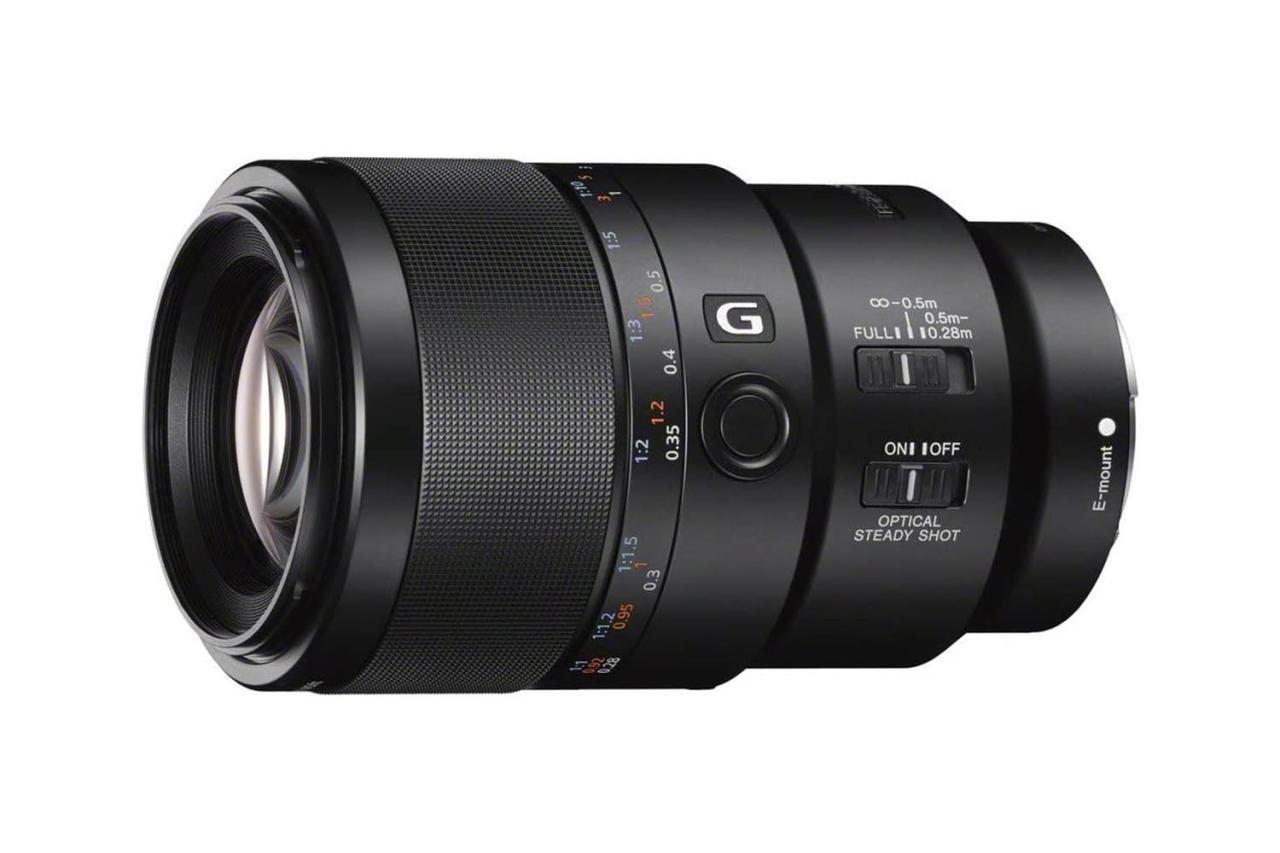
If you’re a Sony E-mount user looking to explore the captivating world of macro photography, the Sony FE 90mm f/2.8 Macro G OSS lens is an essential tool that will take your close-up shots to the next level. Designed with precision and versatility, this lens offers exceptional image quality, precise autofocus, and advanced features that will fuel your creative vision.
In this comprehensive review, we dive into the remarkable features of the Sony FE 90mm f/2.8 Macro G OSS lens. With its 90mm focal length and wide maximum aperture, you can capture stunning details with a beautifully blurred background, creating striking images with a unique perspective. The lens features built-in Optical SteadyShot (OSS) stabilization, ensuring sharp and steady shots, even when shooting handheld or in low light situations.
We explore the lens’s optical construction, emphasizing its exceptional sharpness, clarity, and color accuracy. The fast and accurate autofocus system enables precise focusing, allowing you to capture intricate details with ease. Additionally, the lens’s dust and moisture-resistant design ensures durability and reliability, making it suitable for various shooting conditions.
Whether you’re photographing intricate textures, delicate wildlife, or stunning botanicals, the Sony FE 90mm f/2.8 Macro G OSS lens empowers you to bring your subjects to life in extraordinary detail. Unleash your creativity and unlock the full potential of your Sony mirrorless camera with this exceptional lens that is a perfect companion for macro photography enthusiasts.
4. Canon RF 100mm f/2.8L Macro IS USM
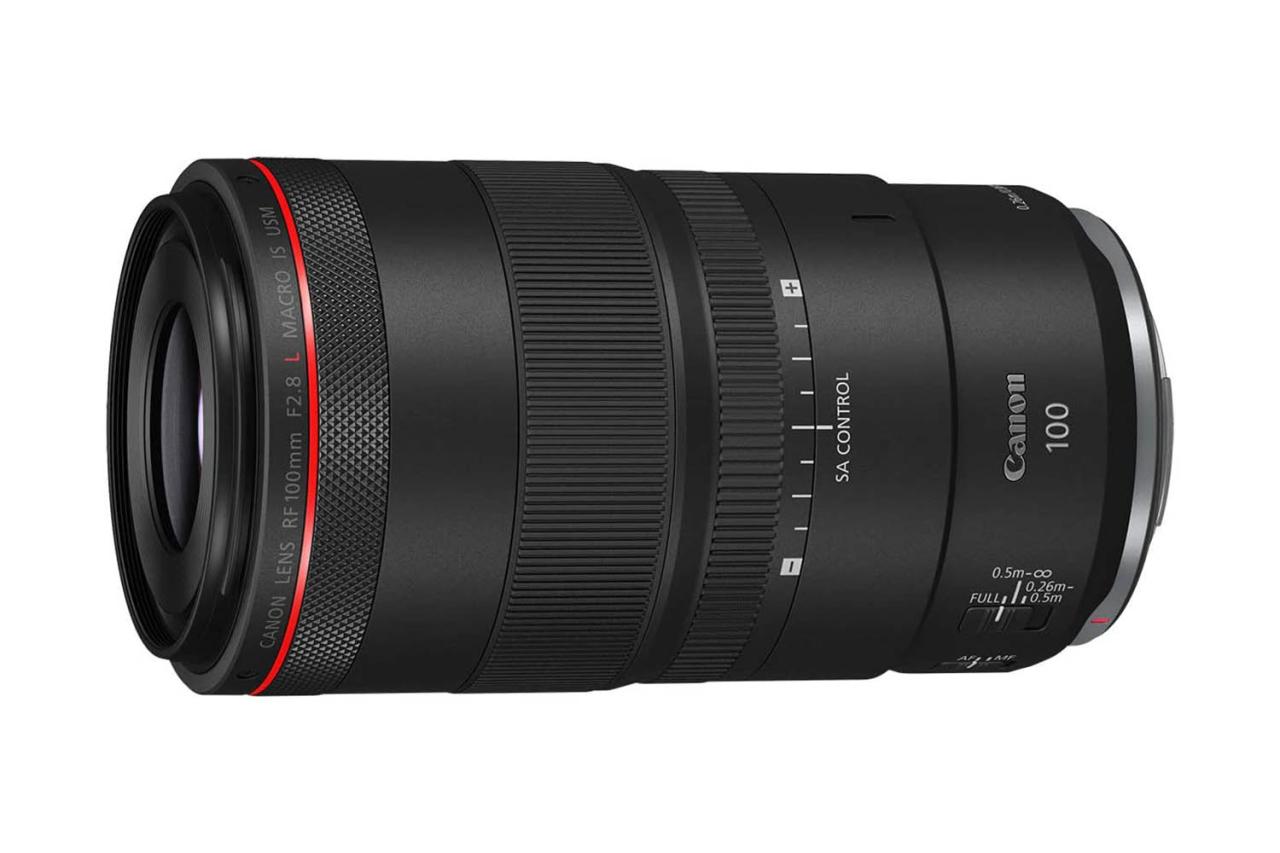
For Canon RF-mount users seeking unparalleled macro photography capabilities, the Canon RF 100mm f/2.8L Macro IS USM lens is a game-changer. Crafted with precision and innovation, this lens offers exceptional image quality, advanced features, and superb performance that will elevate your close-up photography to new heights.
In this in-depth review, we delve into the impressive features of the Canon RF 100mm f/2.8L Macro IS USM lens. With its versatile 100mm focal length and wide maximum aperture, you can achieve stunning magnification and exquisite background blur, producing images with remarkable clarity and artistic bokeh. The lens incorporates a Hybrid Image Stabilization (IS) system, providing up to five stops of stabilization, ensuring sharp and steady shots even in challenging shooting conditions.
We explore the lens’s optical construction, highlighting its exceptional sharpness, contrast, and color rendition. The advanced Ultrasonic Motor (USM) delivers fast and precise autofocus, allowing you to capture intricate details with ease and accuracy. Additionally, the lens features a rugged and weather-sealed construction, providing durability and reliability for outdoor shooting.
Whether you’re capturing intricate textures, delicate subjects, or captivating botanicals, the Canon RF 100mm f/2.8L Macro IS USM lens empowers you to reveal the hidden beauty in your close-up shots. Unleash your creativity and push the boundaries of macro photography with this outstanding lens that embodies Canon’s commitment to innovation and excellence.
5. Canon EF-S 60mm f/2.8 Macro USM
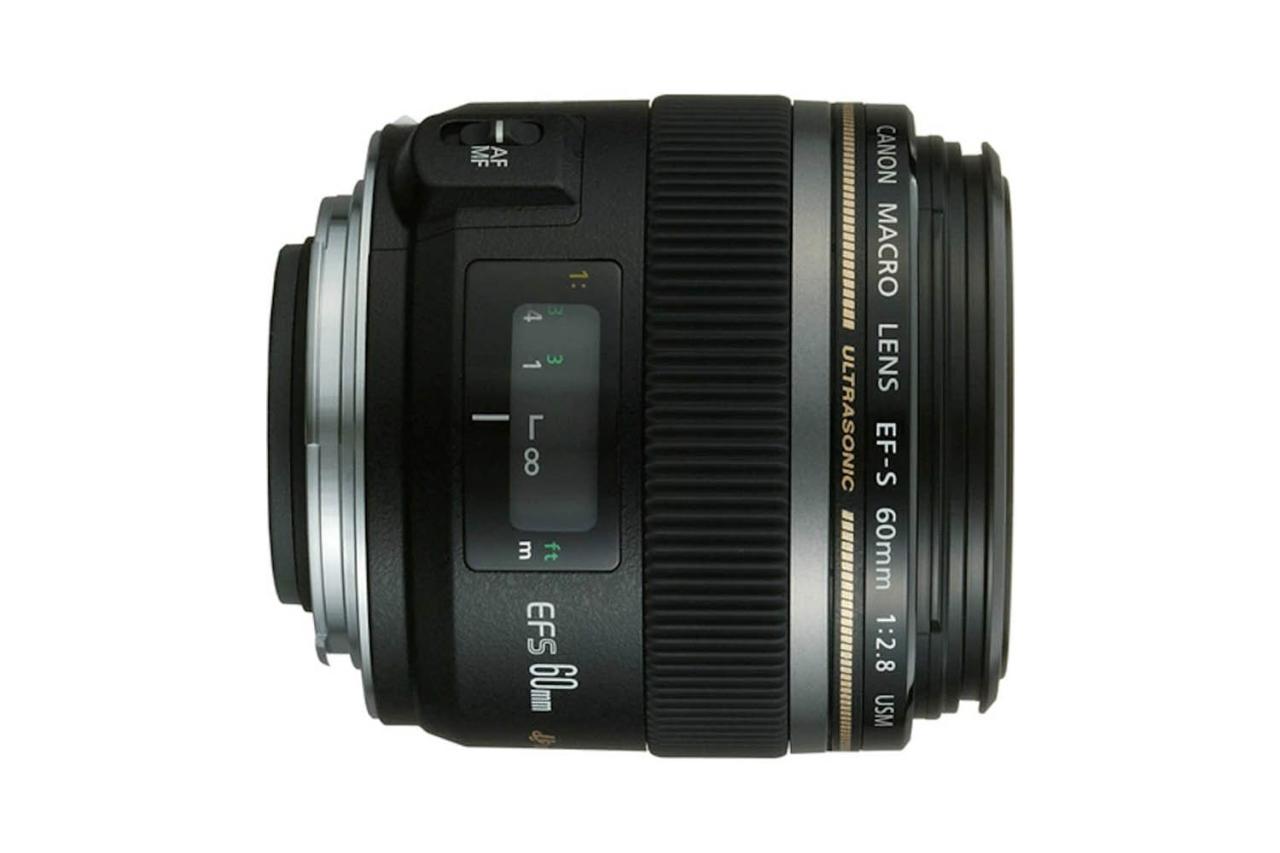
If you’re using an sensor that is croppedCanon DSLR, it will require an EF-S camera, in particular one that has close-focusing capabilities as well as an intermediate focal length. The Canon 60mm EF-S f/2.8 is the perfect option.
With this 1.6x Canon APS-C crop factor which gives you a focal length equivalent of 96mm. It’s enough to avoid any wide-angle distortion, yet not too zoomed in that it will make it difficult to carry around, particularly when you’re photographing compositions on tables.
For a truly macro lens The 60mm f/2.8 can magnify small objects to life-size making it possible to highlight the finer details of food items and draw attention to every little small detail. The optics are superb and you can expect sharpness of professional quality every time you mouse click (assuming you’re using proper methods, of course! ).
This f/2.8 maximum aperture provides enough light for handheld photography in good lighting, and it’s simple for you to make a blurred backdrop to make your favorite ingredient pop. Additionally, the lens is lightweight and compact and allows you to be at ease within any space, whether in the kitchen or in studio.
Today 60mm f/2.8 isn’t easy to locate new, however it’s usually available for a couple hundred dollars. If you can locate a quality model then you’ll be in excellent condition.
6. Nikon AF-S 50mm f/1.8G
A good nifty-fifty camera can take on any type of photography, even food photography, which is the area where this Nikon 50mm f/1.8G comes in. It’s affordable, it’s amazing and you can use it with Nikon DSLRs as well as mirrorless cameras as well (though for shooting on mirrorless cameras you’ll need the FTZ converter).
The aperture blades that are rounded produce a stunning circular bokeh while taking low-depth-of-field food photos – therefore when you’re shooting at your maximum aperture and particularlywhen you’re close enough the result is stunning.
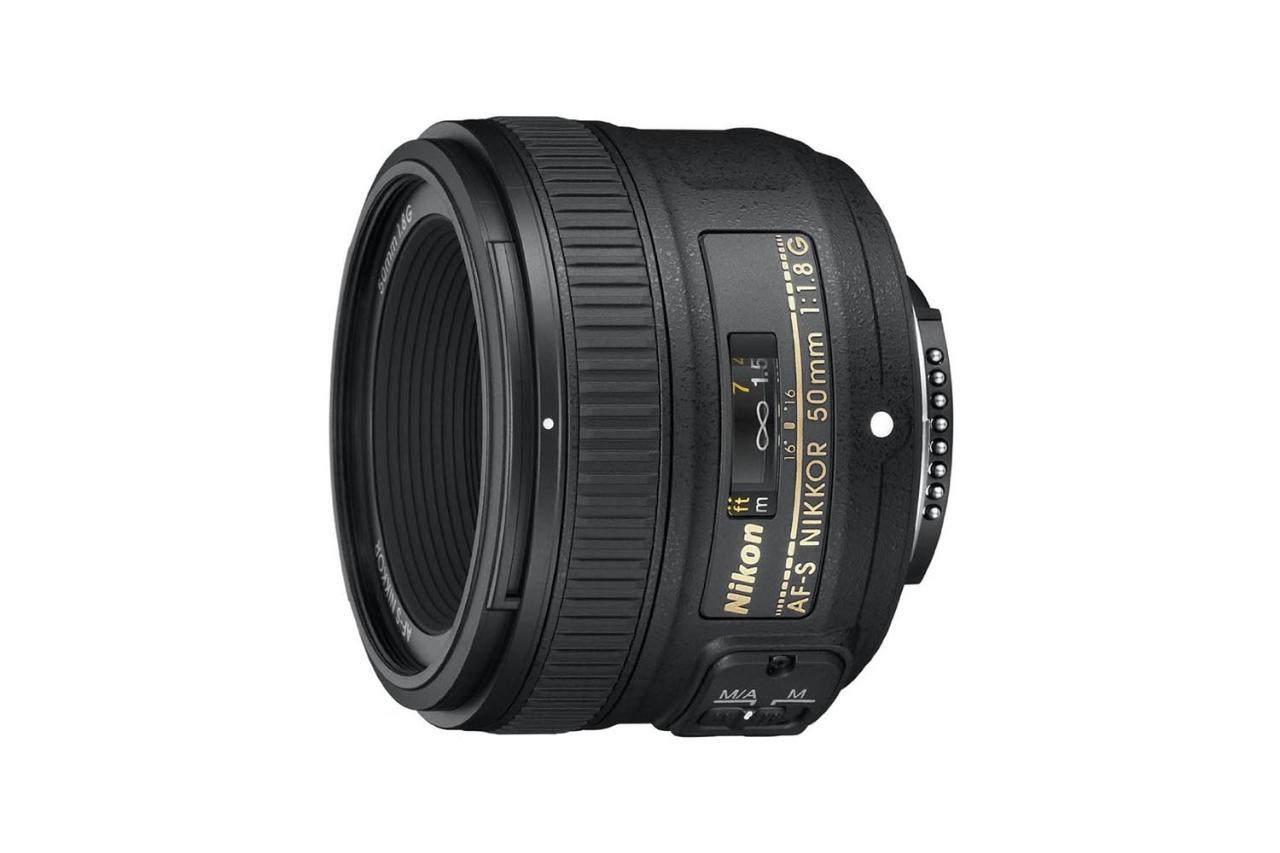
If you’re just beginning with food photography, the 50mm lens of an all-frame camera is an excellent option to start getting your feet wet and get your feet wet. The typical focal length can provide the view of a wide area similar to that of the human eye making it easy to go between the food preparation area as well as the camera’s viewfinder.
The 50mm f/1.8 offers sharp and crisp images and is also extremely mobile (helpful to food-related photographers like Instagrammers who are planning to shoot while on the move!). If you have an Nikkon Full-frame Mirrorless Camera you may want to consider this Nikkor Z 50mm f/1.2 S. It’s costly but also very robust.
7. Nikon 60mm f/2.8G Macro
This 50mm f/1.8 lens above has an ultra-wide aperture, but what happens if you don’t have the lens to be shooting at f/1.8? In this case I’d suggest that you consider the Nikon 60mm f/2.8, which loses a little light, but compensates with a top-quality close-focusing capability.
The 60mm f/2.8 provides true macro magnification, meaning you can take amazing close-ups, and the focal length of 60mm lets you capture images with context of food items on the table. It can be used for both full-frame as well as APS-C cameras, however 90mm APS-C’s focal length is not as useful when you want to shoot photographs of food in the environment.
At f/2.8 You can expect to see a stunning bokeh effect that’s ideal to make your food photographs stand out. There’s no image stabilization, so although you might be able to manage handholding in good lighting but you’ll need to have a tripod on hand.
8. Sony E 30mm f/3.5 Macro
If you’re just beginning your journey in the field of food photography and are looking for a low-cost lens, think about using the Sony 30mm f/3.5. With APS-C cameras you’ll be getting the equivalent of 45mm focal length which is a bit wider and yes, but it’s a great lens for food photography that is more precise and also handy for recording your meals while on the move. (Note that the 30-millimeter f/3.5 isn’t designed for full-frame cameras. If you are using any of Sony’s a7 series cameras I’d suggest looking for the 90mm f/2.8 shown above.)
The Sony 30mm has the f/3.5 maximum aperture. And although it’s not incredibly fast however, it can help reduce the lens’s size and weight low which is always a plus for handheld photography (though when shooting in low light you’ll need an appropriate tripod).
Like other lenses in this list as well, unlike other lenses, Sony 30mm has a the ability to focus 1:1, meaning it can be filled with the tiny aspects of every dish. However, of course you could also step back to take a picture of the table. And you could also use the 30mm focal length to take photographs, street scenes and many more. With a price of just under $300 the lens is an incredible value.
9. Tamron SP 90mm f/2.8 Macro VC
If you are interested in the idea of a macro lens that is longer but aren’t willing to pay to buy one of Canon 100mm f/2.8L lenses or the Nikon Z 105mm f/2.8 VR S, what about using the Tamron 90mm f/2.8, which offers complete macro capabilities and tack sharp image quality at an extremelyreasonable cost?
The camera’s parts are coated in order to prevent ghosting and color fringing, and the images are always stunning particularly when shot at f/2.8. Thanks to VC (Tamron’s model of image stabilization) which allows you to take sharp photos even in dim lighting (while shooting in dimly lit restaurants for example).
Be aware it is that Tamron 90mm f/2.8 is available in many different mounts – including Canon and Nikon The mounts can’t be swapped and you must purchase the right one.
10. Canon EF 24-70mm f/4L IS USM
If you’re not willing to limit yourself to a specific focus length when it comes to food photography you could do better using a zoom lens, one with a wide to short-telephoto range to allow a variety of photo types. Canon’s 24-70mm f/4L Canon 24-70mm lens f/4L is a versatile lens with a great selection of focal lengths, and great image quality for high-detail images.
The 24-70mm lens doesn’t provide true macro capabilities, however you receive an 0.7x magnification ratio to take some stunning close-ups. Although the aperture isn’t nearly as broad as the other options presented in this article, the image stabilization of five stops assures sharp handheld photography even in low lighting.
The bottom line is that for those who are looking to become a food photographer and want the flexibility of a lens that is more flexible, the Canon 24-70mm F/4L is an excellent option. It’s also not expensive and is ideal for those who want to purchase high-quality optics with no cost.
11. Panasonic Lumix G Macro 30mm f/2.8 Asph Mega OIS
The 30mm focal length on an Micro Four Thirds camera offers an equivalent 60mm full-frame focal length. So this Lumix 30mm f/2.8 provides a very natural perspective for normal food photography.
Don’t let the plastic construction make you think that it’s a cheap camera; the 30mm f/2.8 produces extremely sharp images, even at its broadest aperture especially if you’re in a studio, you don’t require tank-like quality build, in any case.
Furthermore it’s compact and light, making it easy to use. It’s an excellent lens to take photos of food for social media. When you combine it with a camera that is small, like the Olympus OM D E-M10 Mark IV you can carry this lens inside your backpack or on your neck at all times and you won’t even know it’s there.
If you prefer taking pictures handheld, don’t fret; the lens comes with stabilization of images as well asa large aperture, which means you’ll be able to shoot even in low lighting. With a price of around $300, it’s not too heavy to pay for, either (always an added benefit! ).




